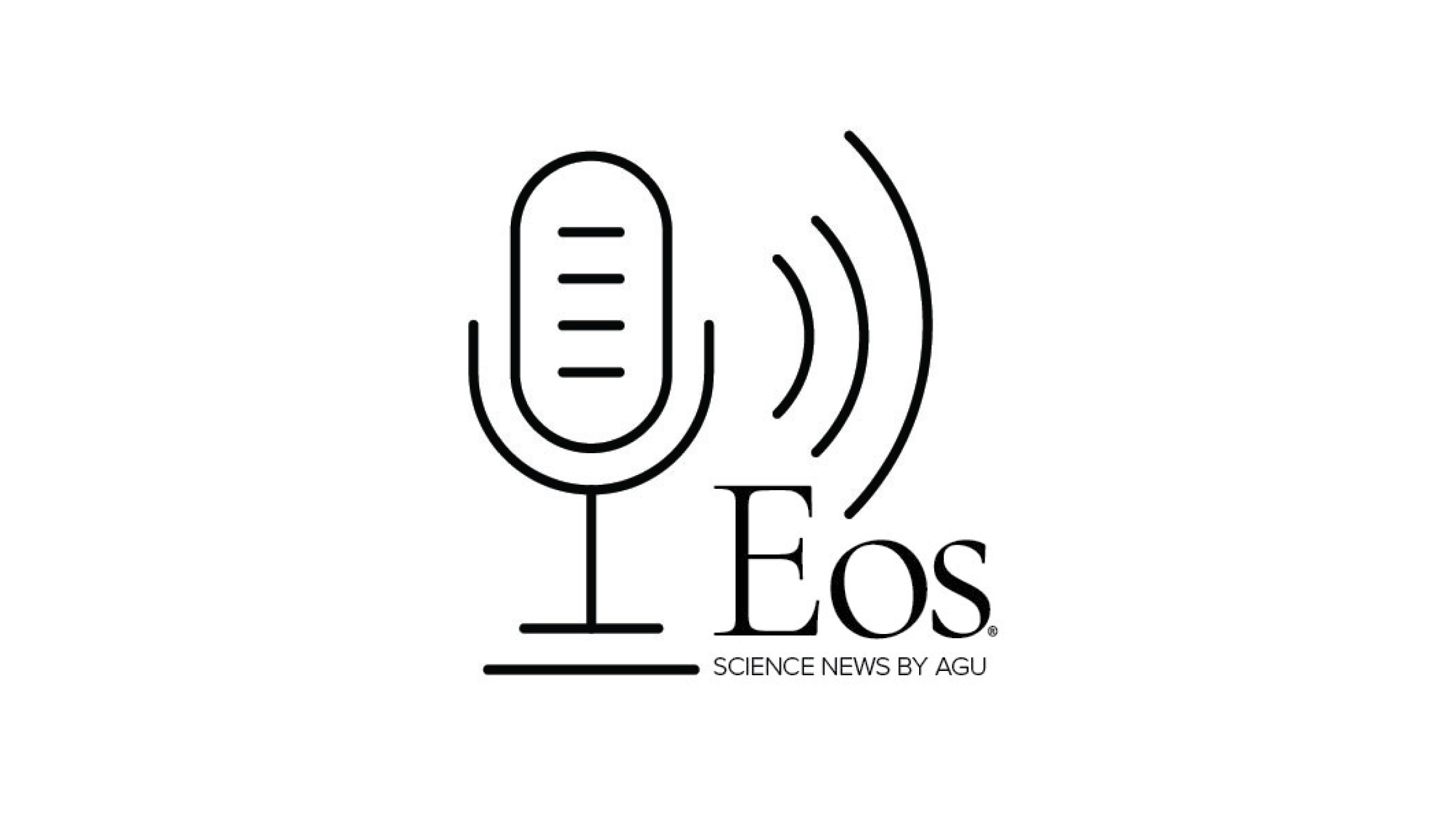This is an audio story from Eos, your trusted source for Earth and space science news. Do you like this feature? Let us know in the comments or at eos@agu.org.
TRANSCRIPT
Emily Dieckman: On a recent spring afternoon, I joined a group of people to tour Jack’s Solar Garden, an agrivoltaics farm in Longmont, Colorado. Agrivoltaics describes the colocation of solar panels and agricultural land. The solar panels can provide shade to crops, the crops’ transpiration can help keep the solar panels cool, and the idea is for it to be a win-win situation.
Allison Jackson, the education and policy manager at the Colorado Agrivoltaic Learning Center, led our portion of the tour. Toward the end, she touched on something called ecovoltaics. Ecovoltaics is less focused on agriculture and more concerned with coprioritizing energy production and ecosystem services. This could be providing shady space for animals to graze, offering habitats for pollinators, or—according to some research—even increasing the amount of carbon stored in soil.
The soil carbon cycle is complex, but one major way carbon enters the soil is through photosynthesis: Plants intake CO2 [carbon dioxide] from the air, and then that carbon enters the soil through plant roots. And one way it leaves the soil is when plants decay. Microbes break these plants down and exhale CO2. Jackson spoke about an experiment at the garden that was focused on how simply growing perennial grasses under solar panel arrays can affect carbon soil levels.
Allison Jackson: Can we actually pull more carbon out of the air and store it in the ground? What we found was that there was no increase in root production in the ground. However, with the shade on top you’re getting lower temperatures. It’s not just plants that are in the soil, right? There’s a microbiome of organisms, mostly that are heterotrophs, right? They take in oxygen and respire CO2. We found that the lower temperatures keep their respiration lower, so we’re actually keeping more CO2 in the soil and the microbiome.
Dieckman: Our group was there on a tour as part of the AgriVoltaics World Conference, where almost 500 attendees from more than 30 countries gathered to discuss everything from the economics and policy of the field to the crops most suited for these arrays to agrivoltaics’ more social aspects.
But, as Stephan Schindele reported passionately in a roundtable about pollinator habitats, it all starts with soil. Schindele is the head of agriphotovoltaic product management at the renewable energy developer BayWa r.e.
Stephan Schindele: What is the future that we’re looking at? I want to repeat myself. It starts all with good soil management.
Dieckman: Later in the week, I tracked down Christopher Toy, an agroecologist and doctoral student at Colorado State University. He was the lead researcher on the project Jackson mentioned earlier about storing carbon in soil under solar panels. Toy was presenting a poster with more detailed information about the work during a poster session at the conference. He started off by explaining the different kinds of carbon stored in soil. First, there’s POM, which stands for particulate organic matter.
Christopher Toy: Particulate organic matter, which is largely just kind of broken-down vegetation. MAOM (M-A-O-M) is mineral-associated organic matter. And that is essentially, as the particulate organic matter is broken down further into simpler compounds by organisms in the soil, it can then sort of become bound to primarily the clay fraction of the soil and be stabilized in that way.
Dieckman: Basically, MAOM is more stable than POM. If you’re trying to get more carbon stored in the soil long term, you want it to be in MAOM form.
This means soil microorganisms play a complicated role in this process. On the one hand, they break down plant materials, which can then be stabilized in the soil as MAOM. That means more carbon sequestration in the soil. On the other hand, when these microbes exhale, they release carbon into the atmosphere as CO2. That means less carbon sequestration in the soil. Exactly how much soil carbon gets stabilized as MAOM and how much gets released back into the atmosphere depends on a ton of factors, including the type of soil, the type of plants, the types of microbes, and the climate.
Like Jackson mentioned during the tour, their study didn’t find much difference between how much carbon is entering the soil through fine root productivity under the solar panels versus in a control area away from the panels. However, the carbon flux, or the amount of carbon leaving the soil, was reduced in the solar array—especially directly beneath the solar panels.
Toy: So when you pair these two, if inputs are being maintained but outputs are being reduced, it would suggest that over time we may be able to sequester additional carbon in the soil due to the presence of the solar panels.

Dieckman: Toy and his colleagues have a few theories about why this is happening.
Jackson already mentioned temperature as a factor. Directly beneath the solar panels, plants get between a quarter and a third the amount of light they get in an open pasture, for example. The cooler microbes might respire less, which can cause less carbon to be released into the atmosphere.
On the other hand, it could be related to soil moisture levels.
For example, Toy’s colleague Matthew Sturchio was also at the agrivoltaics conference. He’s an ecologist and a postdoc at Cornell University who remains affiliated with Colorado State University after finishing his doctoral degree there. He was presenting similar research about work done at a solar facility on the Colorado State University Foothills Campus.
When it rains in an open field, pretty much everywhere is hit evenly. When it rains over a solar array, water drips off the edge of solar panels into concentrated areas of soil. In a study Sturchio conducted, researchers found a higher fraction of MAOM on the western edge of the solar panels, where the water drips off and where there’s lots of sunlight toward the end of the day. That means more plants, which means more microbes to eat the plants. Sturchio sums it up like this.
Matthew Sturchio: We’re thinking there’s more decomposition leading to more microbial turnover that preferentially contributes to MAOM. And you’re not going to see as big of a fraction of POM because of that decomposition.
Dieckman: Toy emphasized that this was only a 3-year study and that in the timeline of soil carbon flux, that’s not very long. There’s more research to be done. He and Sturchio told me that the potential for carbon sequestration is something developers ask about frequently. Jackson even mentioned the idea of carbon credits while giving her tour.
Here’s Toy again.
Toy: Carbon credits, they kind of want to be treated as though you’re just taking carbon out of the atmosphere and sort of permanently putting it somewhere else. But these systems are dynamic. There’s always carbon coming in and there’s always carbon going back out.
Dieckman: Michael Ricketts, an assistant terrestrial ecologist at Argonne National Laboratory, was also at the conference. He was presenting research about how to standardize methods for soil collection and analysis done as part of a project funded by the United States Department of Energy Solar Energy Technologies Office. Because of his position at a national lab, he couldn’t speak directly to the value of Toy’s research. But he made similar comments about how dynamic the whole system is: Carbon is constantly entering and leaving the soil. He also echoed Toy’s point about the study being relatively short.
Michael Ricketts: And what we need is actually studies that are longer than 3 years. We need like, you know, a decadal long study to really say, “Oh yeah, this land management was really effective at storing carbon and keeping it down there,” you know?
Dieckman: Though the research on how solar arrays may affect soil carbon is in its early stages, Ricketts added that to him, it’s worth further investigation. Beyond carbon credits, it’s not a bad idea to think about how to use land in what he calls a “cobeneficial way.” And having more carbon in the soil isn’t just good because of the potential for carbon sequestration.
Ricketts: You know, just by bringing carbon into the soil system, there’s a lot of other additional benefits that go along with that. Increased organic matter in soils can help with soil structure. It reduces soil erosion. It provides nutrients for plants and microbes and generally increases the soil health of the system. So I think it’s important because the more benefits we can get out of a limited amount of land area, the better we’ll be off both environmentally and as a society.
Dieckman: Thank you to Christopher Toy, Matthew Sturchio, Allison Jackson, and Michael Ricketts for speaking with me about their research and to the AgriVoltaics World Conference for having me. The music you’re hearing was being played live at the farm that day by the band ZiMBiRA. I’m Emily Dieckman. Find a reading list for this article at Eos.org, your source for Earth and space science news.
—Emily Dieckman (@emfurd), Associate Editor











/https://tf-cmsv2-smithsonianmag-media.s3.amazonaws.com/filer_public/d1/82/d18228f6-d319-4525-bb18-78b829f0791f/mammalevolution_web.jpg)








Discussion about this post